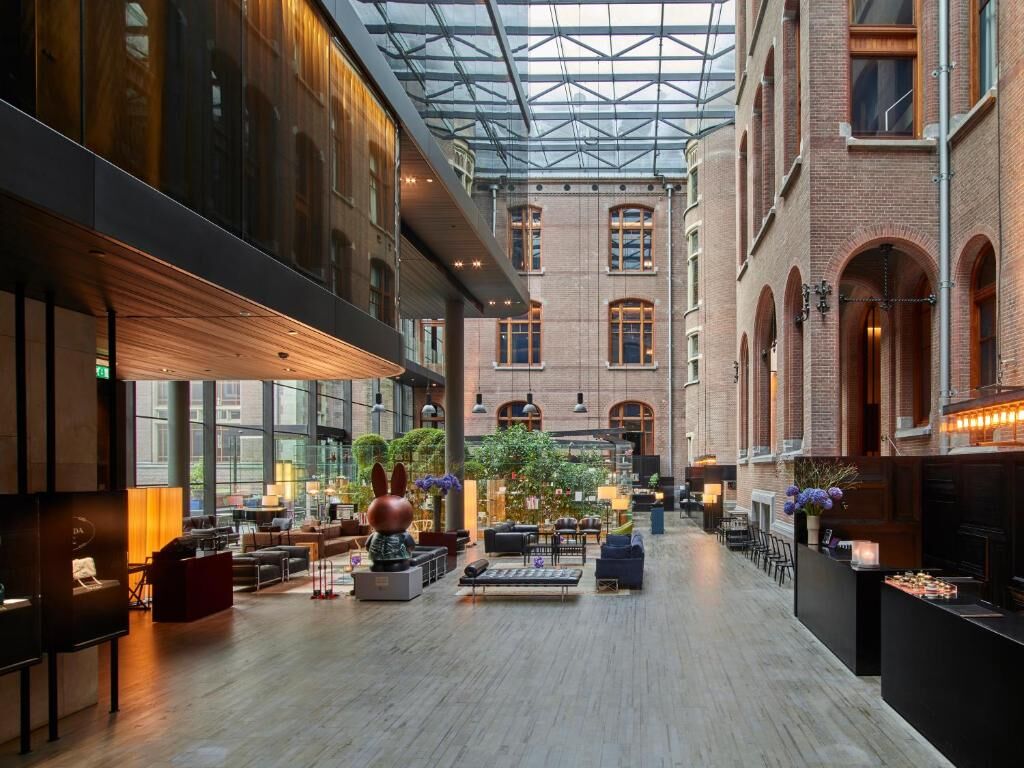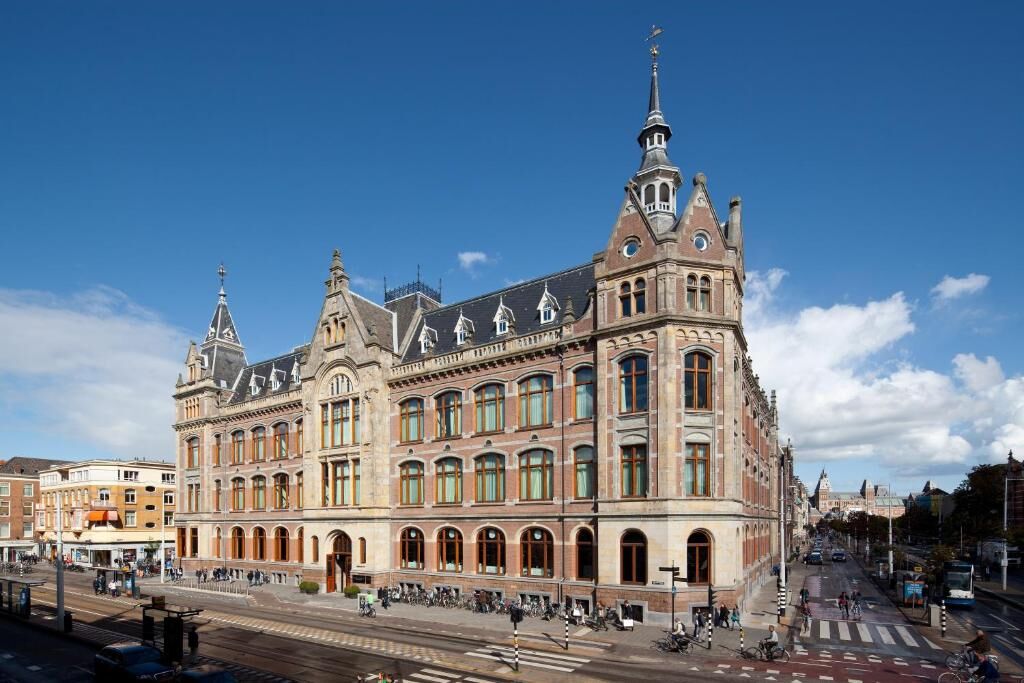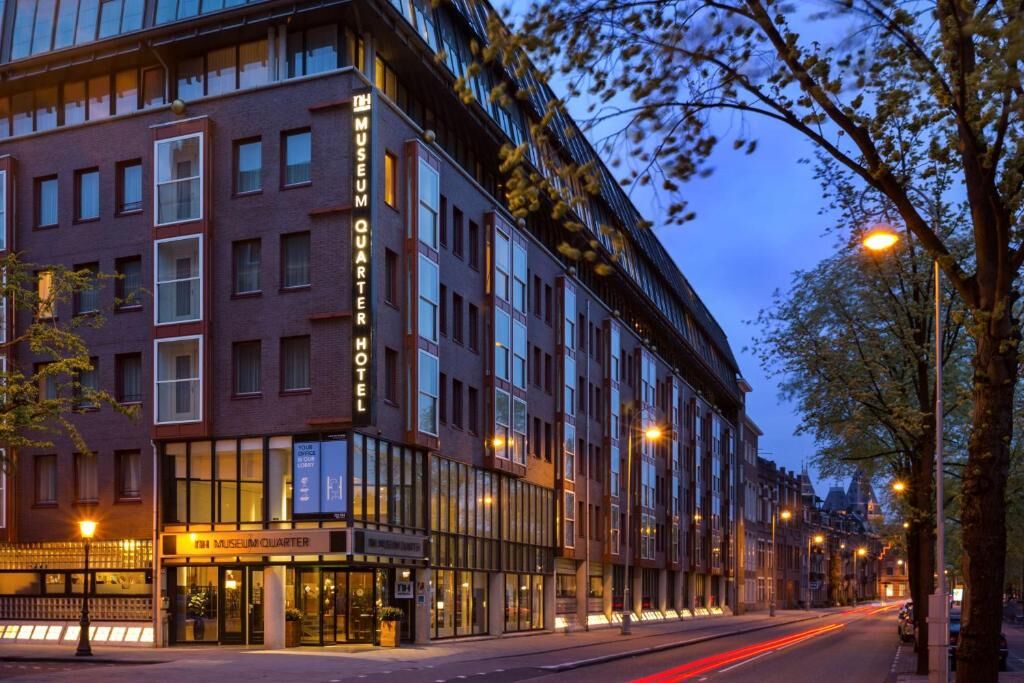If you could camp out in the Rijksmuseum, it would be easy to spend an entire week in Amsterdam without stepping foot outside its hallowed halls. A living monument to the art and history of the Netherlands, the Dutch national museum reportedly houses more than a million artworks and artifacts from the Middle Ages to today. Chief among the collection’s masterpieces are paintings by Dutch Golden Age icons such as Rembrandt and Vermeer.
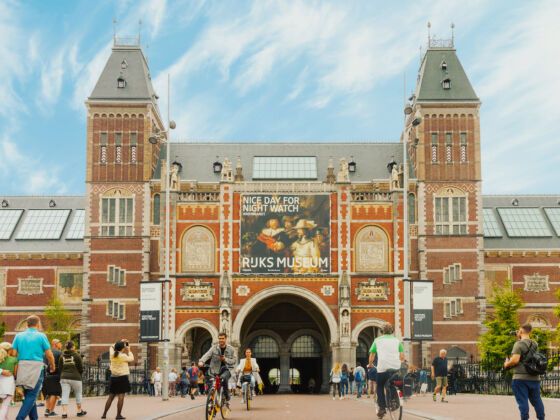
How to Make the Most of Your One Day at Amsterdam's Rijksmuseum
A week is a lot of time to dedicate to a single attraction, however. That’s why we’ve enlisted the advice of the museum’s head of Asian Art, Menno Fitski, to help travelers make the most of a one-day visit at the Rijksmuseum.
A graduate of Leiden University in the Netherlands, where he studied Japanese Language and Culture, Fitski earned his current title after serving as the museum’s East Asian curator for more than 20 years. Heed his tips and tricks for the ultimate one-day guide to the Rijksmuseum.
- Where is the Rijksmuseum located?
- How to get to the Rijksmuseum
- Before you go: the #1 piece of advice for visiting the Rijksmuseum
- The best times to visit the Rijksmuseum
- Guided tours of the Rijksmuseum
- Where to start your visit of the Rijksmuseum
- Famous Rijksmuseum paintings and other artworks
- Underrated collections to check out at the Rijksmuseum
- The Rijksmuseum Research Library
- The Rijksmuseum restaurant
- A surprising fact about the Rijksmuseum
- Where to stay to be near the Rijksmuseum
Where is the Rijksmuseum located?
The Rijksmuseum is located on the Museumplein (Museum Square) in downtown Amsterdam. Museum Square is named as such for the many museums surrounding it, including the Van Gogh Museum, the Moco Museum (a modern and contemporary art venue), and the Stedelijk Museum Amsterdam (for modern and contemporary art and design).
How to get to the Rijksmuseum
The easiest way to get to the Rijksmuseum by public transport is by taking the tram. Tram lines 1, 7, and 19 serve the Rijksmuseum stop, which is a short walk away to the museum. Tram Lines 2, 12, and 5 serve the nearby Museumplein stop. Consult the map of all the tram routes in Amsterdam for more information.
Before you go: the #1 piece of advice for visiting the Rijksmuseum
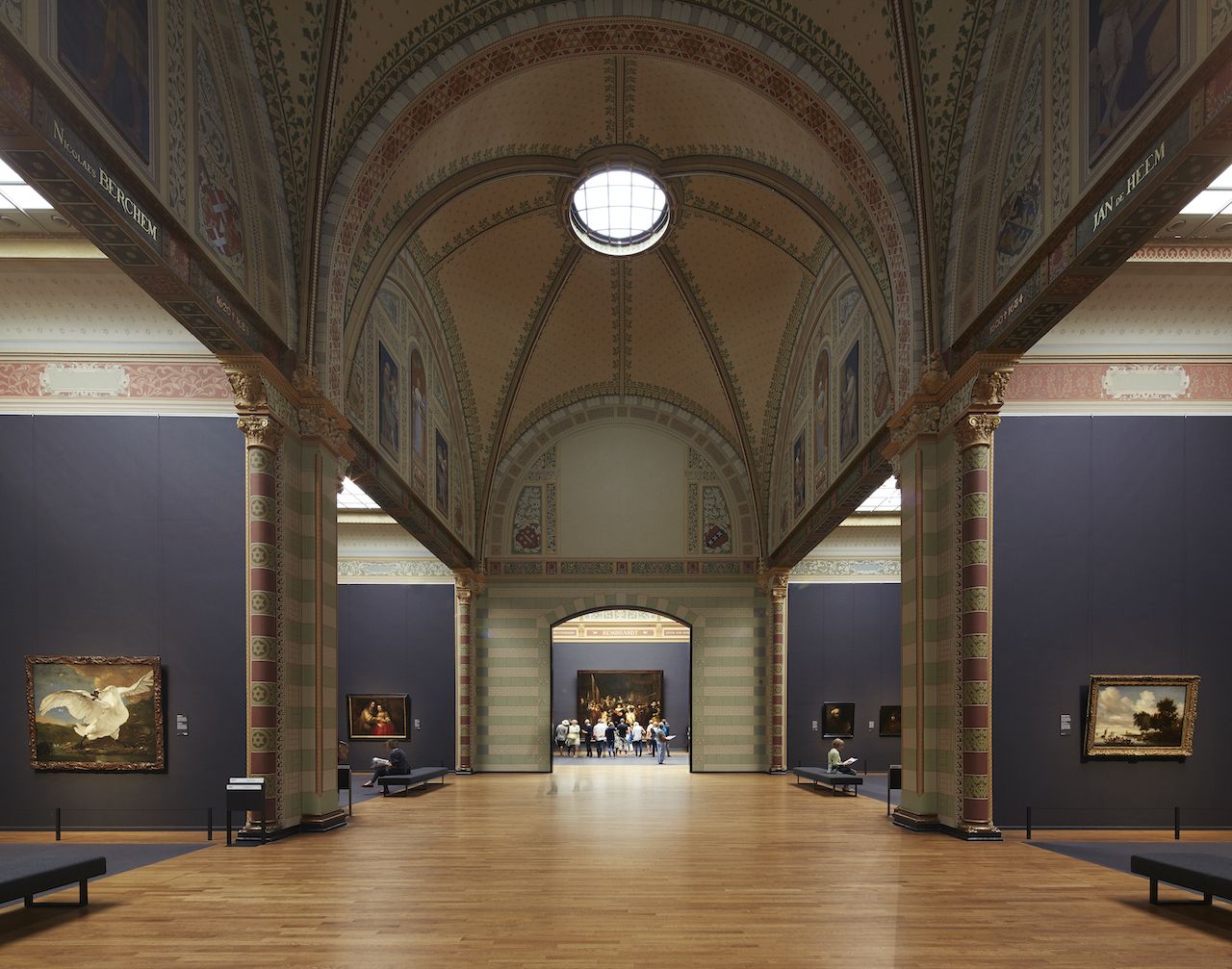
Photo: Erik Smits/ Rijksmuseum
Fitski’s number one piece of advice for visiting the Rijksmuseum is to set an early alarm and beeline for the Gallery of Honour, where the museum’s most famous painting, “The Night Watch” by Rembrandt van Rijn is on display.
“The Night Watch” is framed by an arched entryway at the far end of the hall. But take your time to get there because the entire corridor leading to the painting is a study in the Dutch Golden Age, featuring masterworks by the most impressive painters of the 17th century. Even the hall itself is a work of art, with a tall domed ceiling and beautifully muraled walls, cast-iron beams showcasing inscriptions for the featured artists, and various coats of arms from across the Netherlands.
Because the Gallery of Honour is the most popular wing in the Rijksmuseum, it’s best to get there right when the museum opens. Not only will this help make your visit as efficient as possible, but it also creates an opportunity to spend some quality time with the Dutch greats, awed by every alcove lining the long corridor and each brushstroke adorning the walls. “It’s quite special to roam around the Dutch masterpieces with only a few [others],” says Fitski.
The best times to visit the Rijksmuseum

Photo: Rijksmuseum/Facebook
Unlike the Louvre, the Rijksmuseum is rarely inundated with crowds that make navigating the museum a challenge. Not even “The Night Watch” draws an unmanageable queue like you’d expect to see in front of the “Mona Lisa.” Nonetheless, the museum is a major attraction in one of Europe’s most heavily touristed capitals, and you’ll want to plan your visit accordingly.
The busiest time to visit is around noon. For this reason, Fitski recommends saving the lesser trafficked areas, such as the Asian Pavilion and Special Collections, which displays artifacts ranging from garments and armors to instruments and model ships, for midday and touring more popular galleries in the early morning and late afternoon, from around 3:00 PM until closing.
How long does it take to visit the Rijksmuseum?
If you want to make your visit count, plan to stay between four and five hours at the Rijksmuseum. Of course, you can make your visit shorter by just checking out the highlights, but at 20 EUR per adult ticket, you may want stick around and make the most of it.
The Rijksmuseum hours
The Rijksmuseum is open daily from 9:00 AM to 5:00 PM, even on holidays. For an extra special experience, Fitski suggests planning a family outing on Christmas Day. Not only is the museum likely to be emptier then, but that’s also “such a good way to make memories,” he notes.
Guided tours at the Rijksmuseum
Visitors can organize tours of the Rijksmuseum two ways: bring their own guide or book one through the museum. Groups of up to 10 people are welcome to come with an expert in tow if said expert registers as an external guide in advance. Those who request a Rijksmuseum guide can choose between various tours, some of which may be themed. Most tours are available in either Dutch or English, and the museum also offers guided tours tailored to the visual and hearing impaired.
Where to start your visit of the Rijksmuseum

Photo: Erik Smits/Rijksmuseum
Following Fitski’s advice to begin your visit in the Gallery of Honour and Night Watch Gallery will position you smack in the center of the second floor, which is bookended by the Great Hall and Sculpture Gallery. From there, you can move either clockwise or counterclockwise through the rest of the floor, which features everything from William of Orange Mannerism and William III Delftware to Flemish Influences and French Court Art.
Where you go next depends on your interests and timing. Pop up to the third floor if you’re waiting for a growing crowd to die down. There, you’ll find all things modern, from the works of Karel Appel and fashions of Yves Saint Laurent to the furniture of Gerrit Rietveld and a fighter plane from WWI. Alternately, continue your tour of the classics by working your way down to the first floor, where you’ll find artworks from 1700 to 1900 by famous artists such as Van Gogh and Goya, then end the day touring the Special Collections and Asian Pavilion on the ground floor.

Photo: Erik Smits/Rijksmuseum
To help make your visit as efficient as possible, Fitski also suggests starting your tour outside of the museum altogether: at home. Using the Rijksmuseum app, visitors can create custom routes based on their interests. Several self-guided tours are already pre-planned for visitors on the app, as well, whether you prefer fun themed routes like animals, fashion details, or flower, or a more educational experience exploring topics such as the Rijksmuseum and Slavery from 1500 to 1650 or 1650 to 1960.
Famous Rijksmuseum paintings and other artworks
“The Night Watch” by Rembrant van Rijn
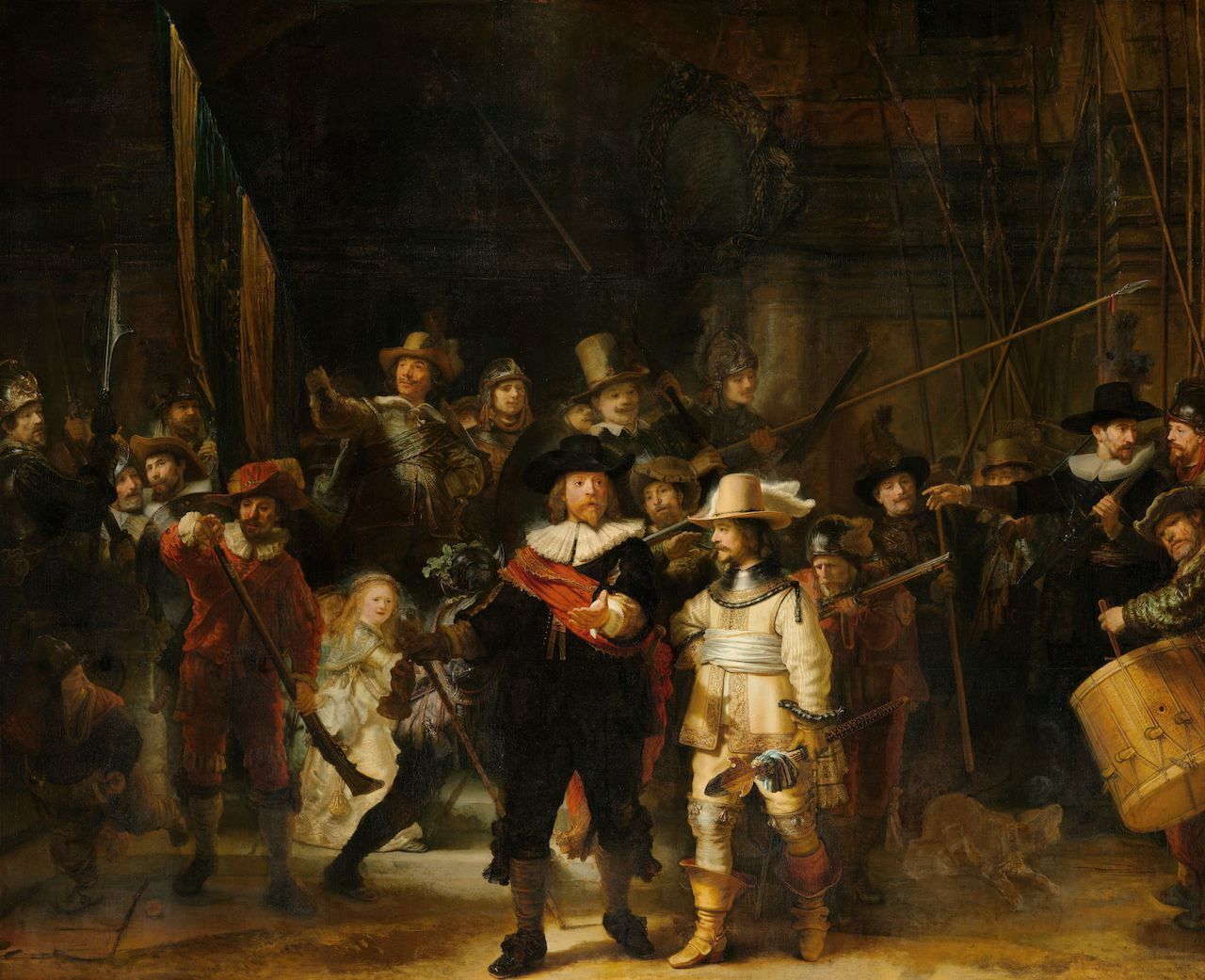
Photo: Erik Smits/Rijksmuseum
By now it’s pretty clear that you can’t visit the Rijksmuseum without seeing Rembrandt’s most famous work. Officially titled “Militia Company of District II under the Command of Captain Frans Bannick Cocq,” “The Night Watch” depicts Amsterdam’s civic guard taking marching orders from their captain, capturing a group portrait where the subjects are in action. Its significance is threefold: The painting introduced movement to portraiture, it’s massive at roughly 12.5 feet by 15 feet, and it showcases a technique called tenebrism, or dramatic illumination, which emphasizes the contrast between light and dark. In fact, the heavy shading is how the painting came to be known as “The Night Watch” despite being staged in the daytime.
“The Milkmaid” by Johannes Vermeer
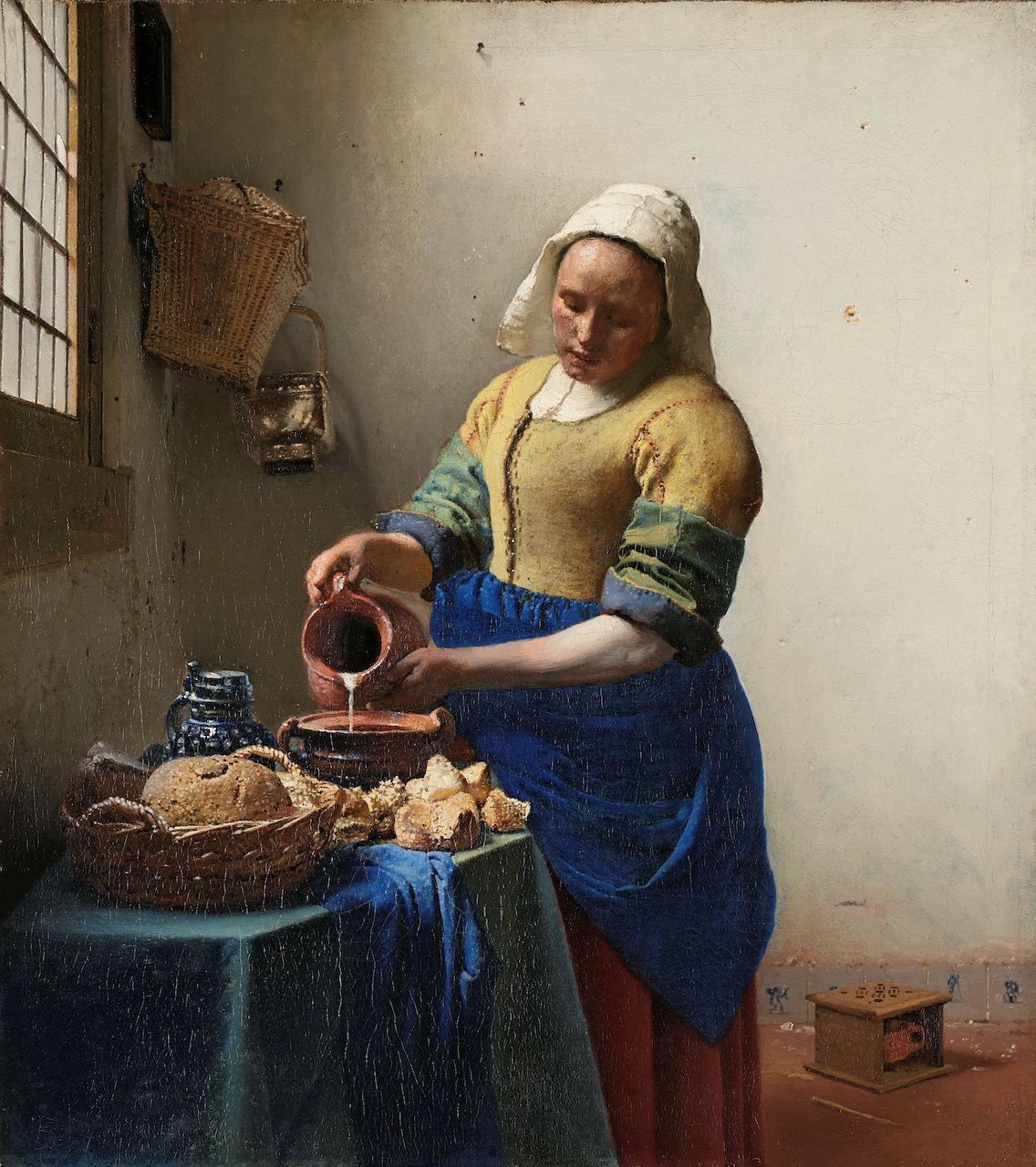
Photo: Erik Smits/Rijksmuseum
Johannes Vermeer is another 17th-century Dutch Golden Age painter whose art has garnered worldwide acclaim. “The Milkmaid” is among his most famous paintings, arguably second only to “Girl with a Pearl Earring.” Like many Vermeer works, “The Milkmaid” elegantly captures the simplicity of everyday life, yet this painting notably depicts a working-class woman in contrast to the more affluent subjects Vermeer often painted. Light plays an important role here as well: Aside from a small stream of milk being poured by the milkmaid, the painting is a still life that relies on the perception of sunlight streaming in through the window for extra depth.
Fitski admires the level of detail and texture on display here, from the bread and ceramic on the table to the milkmaid’s clothes and skin, and notes that there are only 34 known Vermeer paintings left in the world. Of those, the Rijksmuseum’s collection contains no fewer than four, which visitors would be remiss to skip on their museum tours.
Japanese temple guardians

Photo: Erik Smits/Rijksmuseum
Of all the works in the Asian Pavilion, Fitski nominated this pair of Japanese temple guardian sculptures as a must-see. “If you think all Japanese art is zen,” says Fitski, “think again.”
Carved from wood, the sculptures were originally created between 1300 and 1400 to stand on either side of a temple entrance and scare off evil spirits. Their size alone is impressive, measuring nearly eight feet tall and roughly four feet wide. In each guardian’s hand is a vajra, or ritual weapon, to symbolically fight ignorance, while their open and shut mouths symbolize knowledge in its entirety by depicting the first and last syllables of the Sanskrit script Siddham. According to the Rijksmuseum, any temple-goer who passed between these guardian sculptures was said to be able to acquire this wisdom.
Doll’s house of Petronella Oortman
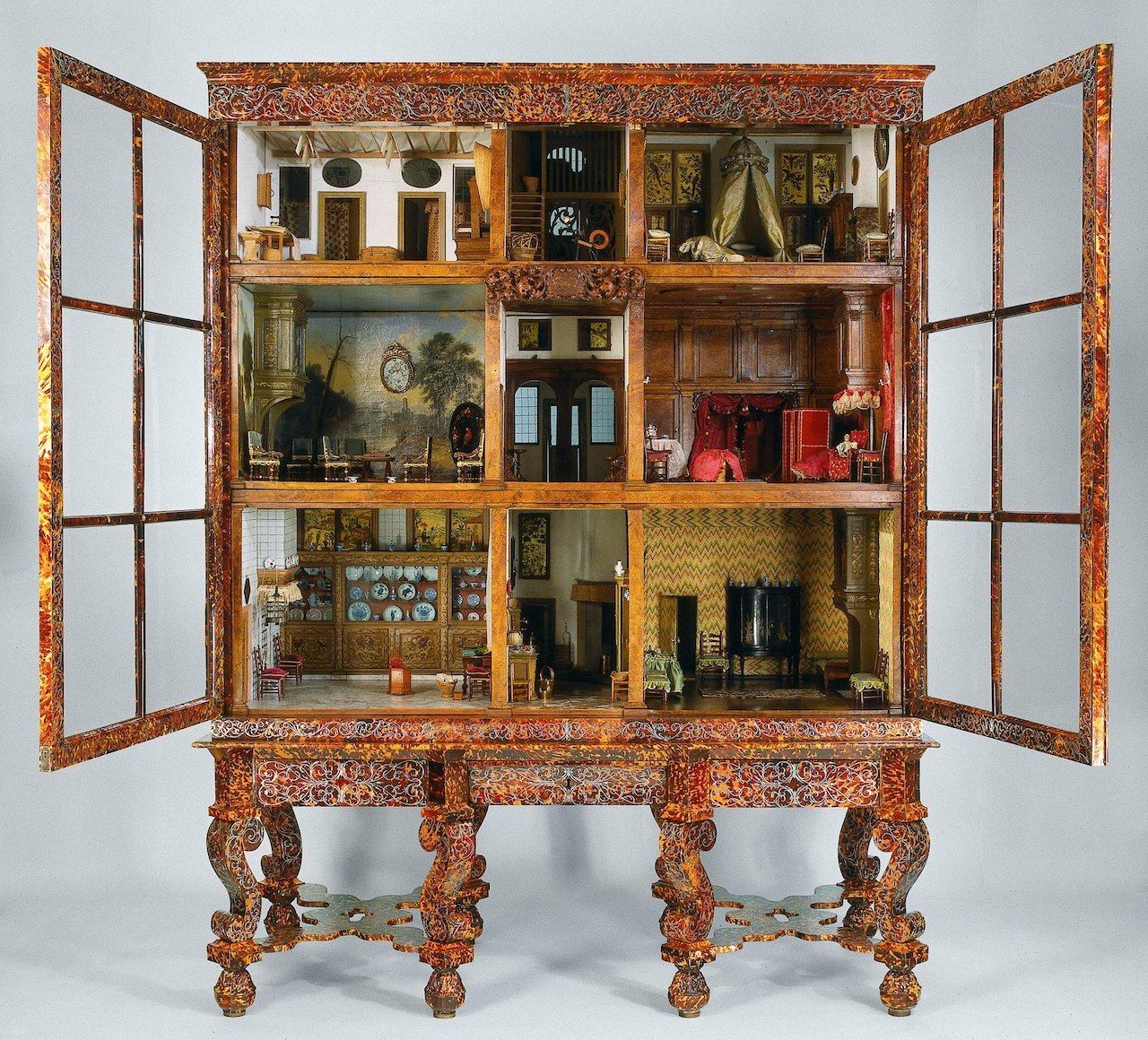
Photo: Rijksmuseum/Facebook
This dollhouse gives museum-goers a different perspective on the Dutch Golden Age: It captures the lifestyle of the 17th-century Dutch elite not on canvas but in miniature.
This dollhouse is no children’s toy. In fact, the dollhouses of the day weren’t designed for children at all. They were collectibles for wealthy Dutch women, in this case Petronella Oortman. What makes Oortman’s dollhouse so remarkable is its authenticity. Everything was made to scale using the same materials that would have been found in an actual luxury home. The porcelain was sourced from China, craftsmen like glassblowers and silversmiths were hired to furnish the dollhouse, and the frescoes adorning the walls could pass for artworks that would hang in the Rijksmuseum. Even the tortoiseshell cabinet in which the dollhouse sits was painstakingly inlaid with beautiful pewter.
All that work no doubt came with a hefty price tag: According to Fitski, Oortman’s dollhouse is believed to have cost more than an actual luxury Amsterdam canal house.
Underrated collections to check out at the Rijksmuseum

Photo: Rijksmuseum
Museum-goers generally plan their visits around masterworks created by icons of the art world. The Rijksmuseum is no exception, yet some of the most fascinating pieces on display were neither crafted by famous hands nor are even considered art; they’re everyday objects that offer insight into Dutch culture and aesthetics in their humblest form.
Though the Special Collections gallery houses the majority of the museum’s miscellaneous artifacts, for Fitski, the museum’s woolen hat collection on the second floor exemplifies the beauty that can be found in the simplicity of historical relics. The collection is made up of centuries-old, individually designed headwear that was once worn by whalers who worked on Spitsbergen, an island located near the North Pole. According to Fitski, the hats may have been hand-crafted by the sailors’ loved ones. “When you see that they are carefully mended,” Fitski says, “you suddenly feel very close to their personal lives of 400 years ago.”
The Rijksmuseum Research Library
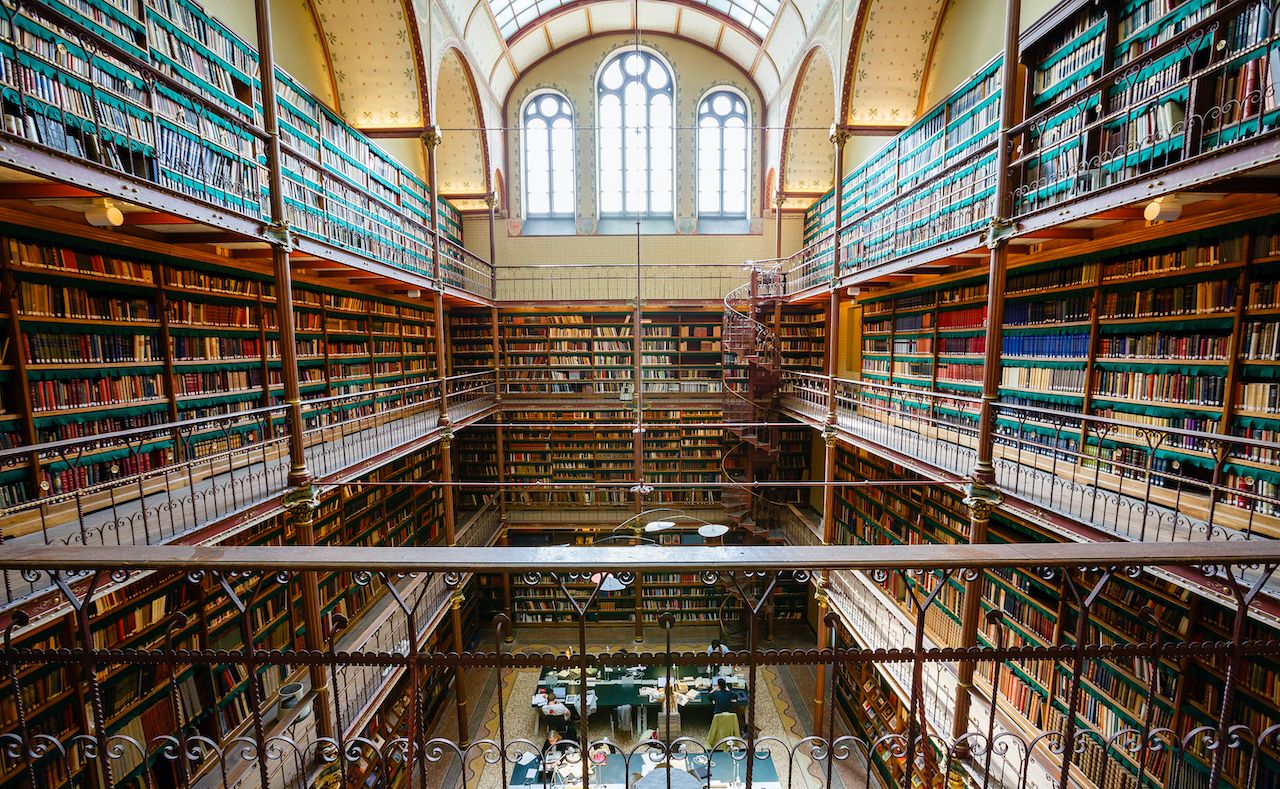
Photo: Piith Hant/Shutterstock
Not just the Dutch national museum, the Rijksmuseum is also a research institute that contains the largest collection of art history books in the Netherlands, in addition to being one of the most significant art libraries in the world, with a catalog of approximately 450,000 volumes. European art history is the focal point of the library collection. Mirroring the museum’s collections, the library offers insight into the art of the Netherlands and Western Europe from the Middle Ages to the 20th century, as well as a variety of works on the history of pan-Asian art. The best part for library lovers? The collection is housed in a beautiful, 19th-century reading room where you could easily spend as much time as you did wandering the museum itself.
The Rijksmuseum restaurant

Photo: RIJKS/Facebook
When your one-day visit of the Rijksmuseum comes to a close, the museum has one more trick up its sleeve: an on-site restaurant with a Michelin star. The restaurant, Rijks, which is located in the Philips Wing on the ground floor, showcases creativity of a different kind through artfully prepared and plated dishes that combine locally grown produce with international influences that have helped shape Dutch cuisine.
A surprising fact about the Rijksmuseum
The Rijksmuseum is full of surprises. And they’re not limited to the museum’s collections. Alongside priceless works of art, the Rijksmuseum is home to two peregrine falcons, which have a nest in the museum’s bell tower. “If you look up to the sky, you might see them flying around,” says Fitski.
Where to stay to be near the Rijksmuseum
We hope you love the spaces and stays we recommend in Amsterdam! Just so you know, Matador may collect a small commission from the links on this page if you decide to book a stay.
Conservatorium Hotel
Amsterdam’s number one luxury hotel, the Conservatorium offers guests an experience like no other. The five-star hotel is located in a historic building but inside the decor is modern and chic with 129 simple yet elegant rooms and suites. The hotel’s huge Akasha Spa and Fitness Center is one of its best features, with relaxation areas, a sauna, a large swimming pool, and treatments like massages and facials on offers. The hotel also has a brasserie, an Asian-inspired restaurant and bar, and relaxing lounge area for drinks and small bites. The Conservatorium is a five-minute walk to the Rijksmuseum.
NH Amsterdam Museum Quarter
A seven-minute walk to the Rijksmuseum, the NH Amsterdam Museum Quarter has 163 simple, comfortable, and spacious guest rooms. Pick a room on the sixth or seventh floor, at the front of the hotel, for floor-to-ceiling windows and great views of the city’s famous canals. The hotel has a fitness center, a bar, and a restaurant, Palette, serving Dutch meals and international dishes.
Hotel JL No76
Only a five-minute walk to the Rijksmuseum, the Hotel JL No76 is an affordable four-star property with fun and fashionable decor. This boutique hotel is located in a 19th-century townhouse, giving guests a homely and cozy feel that is not commonly found in hotels. The art-filled hotel and its splashes of colors will undoubtedly inspire you to visit all the nearby museums. The hotel has a restaurant and an “honesty bar” where guests can pour themselves a drink or enjoy bite to eat whenever they wish.
